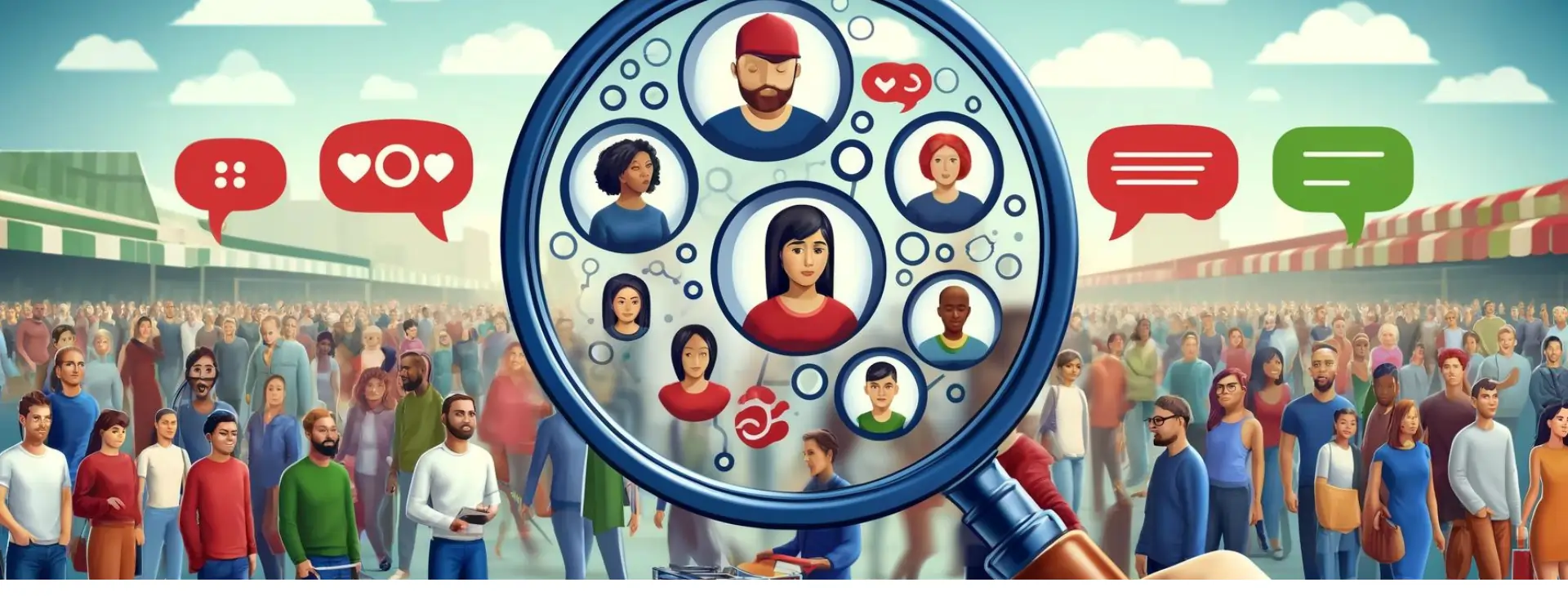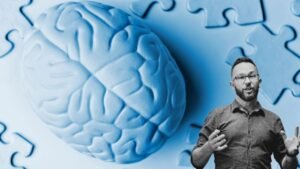In today’s competitive marketplace, the success of any sales effort hinges on a deep understanding of marketing psychology – the study of how consumers think, feel, and make decisions. Statistics reveal that a mere 24.3% of salespeople exceeded their quotas last year, underscoring the need for a more nuanced approach to connecting with prospects and closing deals.
The evolution of marketing psychology has been a remarkable journey, transitioning from traditional persuasion techniques to a sophisticated grasp of human behaviour and decision-making processes. Initially, the sales profession carried a negative reputation, tainted by unethical practices and a lack of formal training. However, the publication of Edward Strong’s “The Psychology of Selling and Advertising” in 1925 marked a turning point, sparking entrepreneurial interest in consumer psychology and paving the way for more sophisticated sales strategies.
Pioneers like Dale Carnegie introduced influential concepts, such as the AIDCA (Attention, Interest, Desire, Confidence, Action) sales formula, which remains relevant today. Further advancements came with the SPIN Selling concept in 1988, which posited that customers are motivated to purchase only when they understand how a product solves their problems – a paradigm particularly useful for complex, multi-stage sales cycles.
Contemporary marketing psychology has evolved to incorporate a nuanced understanding of human behaviour and decision-making processes. By leveraging psychological principles like social proof, reciprocity, and scarcity, salespeople can craft more persuasive and effective strategies that resonate deeply with their target audience. Moreover, the integration of design elements in sales materials has proven to exert a significant psychological impact. Within a mere 13 milliseconds of viewing a sales presentation, prospects have already visually identified the content and begun emotional processing, colouring the entire sales interaction.
As the landscape of consumer behaviour continues to shift, mastering the art of marketing psychology has become an indispensable tool for salespeople seeking to unlock the full potential of their craft. By using marketing psychology tactics delving into the intricacies of human cognition and decision-making, sales professionals can forge deeper connections, cultivate trust, and ultimately, drive conversions at unprecedented levels.
The article will explore the powerful “MBA Influence© methodology,” a comprehensive framework that distils the science of influential selling into three essential cornerstones:
- Motivator: Understand customer motivations and decision patterns (past, present, future oriented)
- Behaviour: Factors shaping customer behaviour (scarcity, policy changes, etc.)
- Habit: Leverage habitual decision-making processes
Exploring these three cornerstones provides a framework for influential selling by:
- Tailoring approaches to customer motivations
- Aligning strategies with desired behaviours
- Recognizing/leveraging habitual decision patterns

Marketing Psychology: The Three Cornerstones of Influence
Motivator: What Drives Customers
Customers make decisions based on past experiences, current needs, and future aspirations. Past Customers rely on what has worked for them before. Appeal to them by integrating solutions into their existing frameworks and showing how offerings have evolved from previous experiences. Present Customers prioritise solving urgent, current problems. Highlight how a solution provides immediate relief to their pain points. Future Customers seek innovative, cutting-edge offerings. Position products as future-ready to excite their desire for novel solutions.
Analyse buying patterns to identify common decision-making habits:
- Habitual buyers stick to familiar choices (e.g. weekly grocery routines)
- Variety-seekers actively pursue new experiences
- Big-ticket purchases like homes/cars involve extensive decision processes
Tailor strategies to each pattern:
- Loyalty programs for habitual buyers
- New product promotions for variety-seekers
- Personalised marketing for major purchases
Behaviour: How Customers Act
Environmental factors like social norms, economic conditions, and technological advancements shape how customers perceive products and make purchasing decisions. Psychological triggers including motivation, perception, learning, beliefs, and attitudes drive internal decision processes.
To tailor their sales strategy and techniques effectively, businesses must understand both external environmental influences and internal psychological triggers impacting their customer segments. Actively listening to customers and demonstrating empathy allows sales teams to gather insights on needs, preferences, and pain points. Personalised communication tailored to individual behaviours and interests resonates better.
Environmental changes can significantly alter customer behaviour. For example, new policies like car purchase restrictions can trigger scarcity mindsets, prompting customers delaying purchases for months to suddenly take action before deadlines.
Businesses must identify the specific customer behaviours they want marketing efforts to influence, whether driving immediate purchases through limited-time offers, building long-term relationships, or using consultative questioning to uncover core problems to solve. The desired behaviour informs which environmental factors and psychological triggers to leverage through their marketing campaigns and sales strategies.
Habit: Knowing Your Customer’s Routine
Habits significantly shape customer decision-making by creating mental shortcuts that become automatic over time. Understanding customer habits around routines, purchase triggers, and product usage allows brands to reinforce desired behaviours through incentives, rewards, and strategic interventions at key moments.
To effectively tailor sales techniques, businesses must first understand varied customer personas – their preferences, needs, pain points, communication styles, and decision-making behaviours. This allows segmenting potential customers and adapting sales messaging, presentations, value propositions, and communication approaches for each segment.
Adaptive selling requires active listening, demonstrating empathy, building relationships, and continuously learning about evolving customer needs through techniques like empathy workshops, journey mapping, testing, and metrics tracking. Flexibility to customise pitches, personalise outreach, and match communication styles builds trust.
Importantly, 40% of decisions stem from ingrained habits rather than deliberate evaluation. Recognizing habitual patterns related to timing, routines, and external triggers enables reducing objections by aligning sales cycles strategically.

Using Psychology to Boost Sales
Leveraging insights from neuroscience and behavioural economics can greatly enhance sales strategies, but must be implemented ethically. Research shows psychological marketing tactics like controlling presentation order, offering the ideal 2-3 product options, and using low-pressure language to reduce reactance can significantly impact buying decisions.
Specifically, presenting first creates biases favouring your offering if decision timeframes are short, while presenting last is better for longer decision cycles due to competitor messaging fading from memory. Overwhelming choice can diminish sales, so limiting options to 2-3 can boost conversions by 66% compared to a single option.
Behavioural economics recognizes human behavior and decisions are heavily swayed by emotions, cognitive biases, social norms and subconscious drivers beyond rational analysis.
Applying principles like framing, anchoring, and tapping into deep-seated motivators allows better aligning pitches with instinctive decision processing in the brain.
However, ethical considerations are paramount in marketing strategy. Rather than manipulating or deceiving, the goal must be building trust through transparency about marketing intentions and respecting customer autonomy. Provide complete, accurate information and frame choices in a way that empowers fully informed decisions aligning with customers’ true needs.
Long-term success hinges on fostering relationships of mutual benefit. Use psychology ethically to create compelling experiences resonating with each customer’s unique decision patterns. But avoid exploitative marketing tactics that could erode credibility and loyalty. Continuously test and optimise through ethical experimentation to maximise effectiveness while prioritising integrity.

Boosting Sales with Customer Insights
Understanding Your Customer’s Journey
Mapping and optimising the entire customer journey from initial awareness to advocacy is crucial for businesses. This involves visualising all touchpoints like websites, social media, stores, and analysing customer motivations, expectations and emotions at each stage through techniques like surveys and data analysis.
Key touchpoints to optimise include the first interaction for compelling impressions, smooth purchase experiences, exceptional post-purchase support, and loyalty programs encouraging repeat business. Consistency, personalization through customer data, omnichannel integration, and continuous improvement based on metrics are essential.
Creating emotional connections
Creating emotional connections that foster brand loyalty is also vital. Positive emotions like joy and belonging powerfully drive and influence purchasing decisions. Brands should provide meaningful experiences aligning with customers’ deeper desires, share authentic stories, offer personalised human interactions, and demonstrate empathy for customer needs.
Communicating transparently and making customers feel truly valued allows forging emotional bonds. This makes customers more forgiving of mistakes and likely to become loyal advocates.
By deeply understanding and refining every touchpoint of the customer journey while building emotional resonance, businesses can enhance satisfaction, cultivate loyalty, and accelerate growth.
Keeping Customers Happy for the Long Haul
To build long-term relationships with customers, it is important to meet their needs and expectations. Deeply understand goals, challenges, preferences, communication styles through active listening and open dialogue.
Deliver expertise and quality that exceeds expectations
- Solve key problems
- Create tangible value aligned with specific needs
Maintain clear, respectful communication
- Use preferred channels
- Avoid jargon
- Regularly update on progress
- Promptly address concerns
Proactively seek candid feedback
- Praise, complaints, suggestions
- Quickly implement recommendations
- Correct mistakes
- Demonstrate continuous improvement
Express sincere appreciation
- Thank-you notes
- Referrals
- Event invitations
- Tailored rewards/incentives
- Celebrate successes and milestones
Make customers feel truly heard, valued and invested in as partners
Consistent quality, responsiveness, authentic relationship-building cultivates trust and loyalty
Prioritize customer needs over short-term transactions for profitable, collaborative long-term relationships

Advanced Tips for Sales Success
Harnessing the Power of Social Influence
Social proof, where people look to others’ actions to guide their own behavior, significantly impacts customer decisions. Studies show social proof correlates positively with product evaluations across various domains like childcare and ethics. When uncertain, people tend to conform to perceived correct behaviors, reducing decision conflicts.
Group dynamics also sway customers through the desire for peer acceptance and conformity influence consumer behavior – the phenomenon of “groupthink.” Roles of leaders and influencers within groups amplify social proof effects.
In marketing, social proof is leveraged through influencers, online reviews and ratings to have marketers build trust, credibility and drive sales. Types include user social proof (reviews, ratings), credibility proof (media mentions), and authority proof (expert endorsements).
Businesses showcase positive customer experiences and endorsements to create strong digital presence and social validation. Social proof provides a powerful shortcut for consumers to determine which products/services to choose based on others’ behaviours.
By better understanding principles of social proof and group influence, companies can optimise marketing strategies to align with these psychological tendencies and decision-making patterns effectively.
Designing Sales Experiences That Work
Human-centred design (HCD) is a vital approach for creating solutions aligned with user needs by focusing on:
- People-centric mindset: Understanding people’s context, wants, feelings
- Solving root problems through empathy and systemic thinking
- Iterative prototyping, testing, and refinement based on user feedback
- Collaborative, community-driven design across disciplines
In sales, HCD principles can optimise the entire customer experience:
- Map customer journeys to identify pain points and opportunities
- Optimise touchpoints (websites, social, in-person) for seamless experiences
- Build emotional connections through personalization, storytelling, transparency
- Meet needs and exceed expectations through continuous value delivery
- Seek constant feedback, rapidly iterate offerings to stay customer-aligned
Social proof (reviews, influencers, endorsements) and group dynamics also heavily influence behaviours. Leveraging these:
- Showcases positive experiences to build trust and brand credibility
- Aligns with people’s tendencies to conform based on others’ actions
- Provides social validation signals that ease consumer decision-making
Overall, HCD enables designing customer-centric sales strategies by combining:
Deep user empathy → Iterative solution refinement → Social proof integration
This human-focused approach fosters long-term relationships through continuously evolving solutions tailored to real customer needs and behavioural tendencies.
Winning with Behavioral Economics: Making Sales Fit What Customers Want
Behavioural economics reveals cognitive biases and psychological factors influencing consumer behavior and purchasing decisions beyond rational choice. Leveraging these concepts optimises marketing campaign and sales strategies:
Anchoring sets perceived value through tactics like high initial pricing then discounts, making deals seem more appealing. Comparative pricing like Aldi’s “Like” ads anchors by highlighting benefits over higher-priced competitors first.
Social proof creates a sense of trust and validation through customer testimonials, reviews, and user-generated content showcasing others’ positive experiences and purchasing decisions.
Scarcity with limited-time offers, pricing packages and low inventory notifications induce fear of missing out (FOMO), prompting a sense of urgency to purchase before products are gone.
Personalization through data-driven customised recommendations and tailored messaging makes customers feel understood and valued, increasing engagement.
By tapping into anchoring biases, social validation tendencies, scarcity urgency, and personalised relevance, businesses can optimise touchpoints to effectively influence perceived value, build trust, create purchase pressure, and ultimately boost conversion rates aligned with real human decision drivers.







